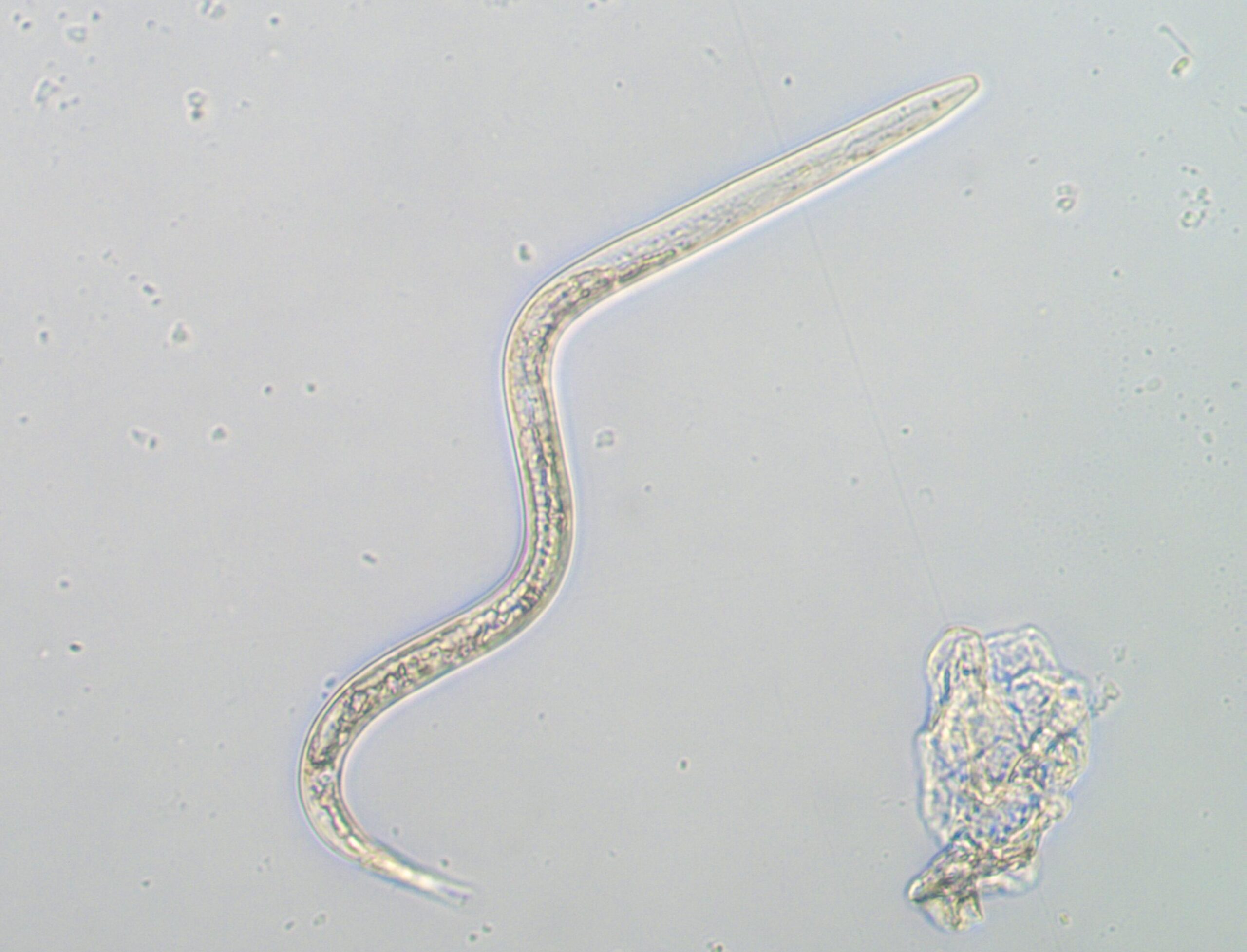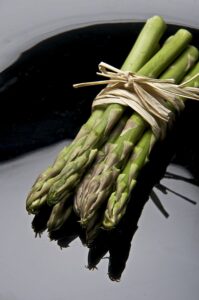Meloidogyne incognita
Meloidogyne incognita (southern root-knot nematode) was originally described in 1919 by Kofoid and White, with the specific epithet reflecting the unknown or uncertainty surrounding the status of the nematode (Hunt and Handoo, 2009). This uncertainty was derived from its initial discovery, where viable eggs were collected from humans! Meanwhile, their common name, southern root-knot nematode, derives from their initial discovery from troops stationed mainly in Texas as well as Oklahoma, New Mexico, and Arizona.

Credit: Sam Mowery
Distribution
M. incognita is considered the most widely distributed root-knot nematode, particularly in tropical and subtropical climates. Much like M. enterolobii, M. incognita has established in countries across Africa, Asia, Europe, North America, South America, and the Caribbean. M. incognita has expanded its distribution to also include many countries in Oceania, including Australia (Quesada-Ocampo, 2021). Additionally, when discussing M. incognita’s distribution throughout the United States, M. incognita is present (localized or widespread) in approximately 20 different states, including California, Louisiana, Mississippi, North Carolina, and South Carolina.
Symptoms of Infection
As previously mentioned, in sweetpotato, the presence of galls on the fibrous and storage roots is a significant symptom that indicates an infection by a root-knot nematode. Cracking on the storage roots is an additional symptom that may be present. The above-ground symptoms of root-knot nematode infection can include chlorosis, stunting, and plant death. These symptoms are associated with all species of root-knot nematode, not just M. incognita.
Identifcation
As previously stated, the identification of M. incognita can only be determined through molecular techniques in a diagnostic laboratory. Sweetpotato symptoms such as root galling and cracking on the storage root serve as great visual diagnostics for root-knot nematode infection, however, species identification is not possible. The level of galling also depends on host suppressibility, the density of the nematode population, and how aggressive the root-knot nematode species is (Quesada-Ocampo, 2021). Meaning, that additional factors contribute to the severity of root galling, not just that of the specific species.
Identification of M. incognita within the field or within infected plant tissue begins with collection. Soil samples from an infected field may be collected, packaged, and sent to a diagnostics laboratory for species identification. Like soil samples, infected plant tissue can be carefully removed from the field, packaged, and sent to a diagnostics laboratory. Depending on the diagnostics laboratory, there may be differing sampling or reporting instructions, so it is best to visit their website or call prior to sampling.
Click here to find links to diagnostic laboratories in each state related to the SweetARMOR project.
Host Plants
M. incognita has a very broad host range, including vegetables, herbs, field crops, fruits, trees, ornamentals, and even weeds. M. incognita is not considered an aggressive, highly virulent species of root-knot nematode like M. enterolobii. However, given that M. incognita has been the subject of research for a longer period, more host plants are characterized for M. incognita than M. enterolobii. As previously mentioned, the incorporation of resistance genes into economically important crops such as tobacco and bell pepper have successfully converted hosts to nonhosts for M. incognita, thus reducing its host range.
M. incognita Reported Host Plants:
The below list has been adapted from Nemaplex.

“Asparagus on Black (4318038173)” by THOR / CC BY 2.0
Vegetables
- Sweetpotato (Ipomoea batatas)*
- Bell Pepper (Capsicum annuum)*
- Okra (Abelmoschus esculentus)*
- Common Bean (Phaseolus vulgaris)*
- Lettuce (Lactuca sativa)
- Tomato (Solanum lycopersicum)*
- Onion (Allium cepa)
- Eggplant (Solanum melongena)
- Asparagus (Asparagus officinalis)*
- Sugar Beet (Beta vulgaris)*
- Turnip (Brassica rapa)*
Fruits
- Papaya (Carica papaya)
- Mango (Mangifera indica)
- Banana (Musa spp.)*
- Pineapple (Ananas comosus)
Herbs and Spices
- Basil (Ocimum basilicum)
- Ginger (Zingiber officinale)
- Camellia or Tea Plant (Camellia sinensis)
- Chamomile (Matricaria chamomilla)
Field Crops

“Oryza sativa L” by Syariful Msth / CC BY-SA 4.0
- Rice (Oryza sativa)*
- Tobacco (Nicotiana tabacum)*
- Upland and Sea Island Cotton (Gossypium hirsutum & Gossypium barbadense)*
- Soybean (Glycine max)*
- Cannabis (Cannabis sativa)
- Sunflower (Helianthus annuus)
Trees
- Coffee (Coffea arabica)*
- Mulberry (Morus spp.)
- Silk Tree (Albizia julibrissin)
- Flowering Maple (Abutilon indicum)
Ornamentals

“Calendula officinalis marigold flower” by YubKooka / CC BY-SA 4.0
- Elephant Ear (Alocasia spp.)
- Snapdragon (Antirrhinum majus)
- Begonia (Begonia spp.)*
- Butterfly Bush (Buddleja spp.)
- Common & Japanese Boxwood (Buxus sempervirens & Buxus microphylla)
- Pot Marigold (Calendula officinalis)
Wild Plants and Weeds
- Purple Nutsedge (Cyperus rotundus)
- Yellow Nutsedge (Cyperus esculentus)
- Morning Glory (Ipomoea spp.)
- Velvetleaf (Abutilon theophrasti)
- Palmer Amaranth (Amaranthus palmeri)
(*) Indicates a host species that is naturally susceptible to infection by M. enterolobii and has genotypes available that are resistant to infection.
Meloidogyne incognita and Sweetpotato
Sweetpotato is within the host range of M. incognita. Unlike resistance to M. enterolobii, there are many commercially available sweetpotato cultivars that are considered resistant to infection by M. incognita. Below is a list of sweetpotato cultivars that have been identified as resistant to M. incognita.
M. incognita Resistant Sweetpotato Cultivars:
- Covington: Intermediate to Resistant
- Bayou Belle: Intermediate to Resistant
- Bellevue: Highly Resistant
- Burgundy: Resistant
- Evangeline: Highly Resistant
- Murasaki-29: Highly Resistant
- Bonita: Resistant
- Heartogold: Resistant
- Hernadez: Intermediate to Resistant
- Jewel: Intermediate to Resistant
- Bienville: Resistant
Click here to learn more about M. incognita resistant sweetpotato cultivars.
Through the SweetARMOR project, the project team aims to develop cultivars that will retain resistance to M. incognita while also gaining resistance to M. enterolobii.